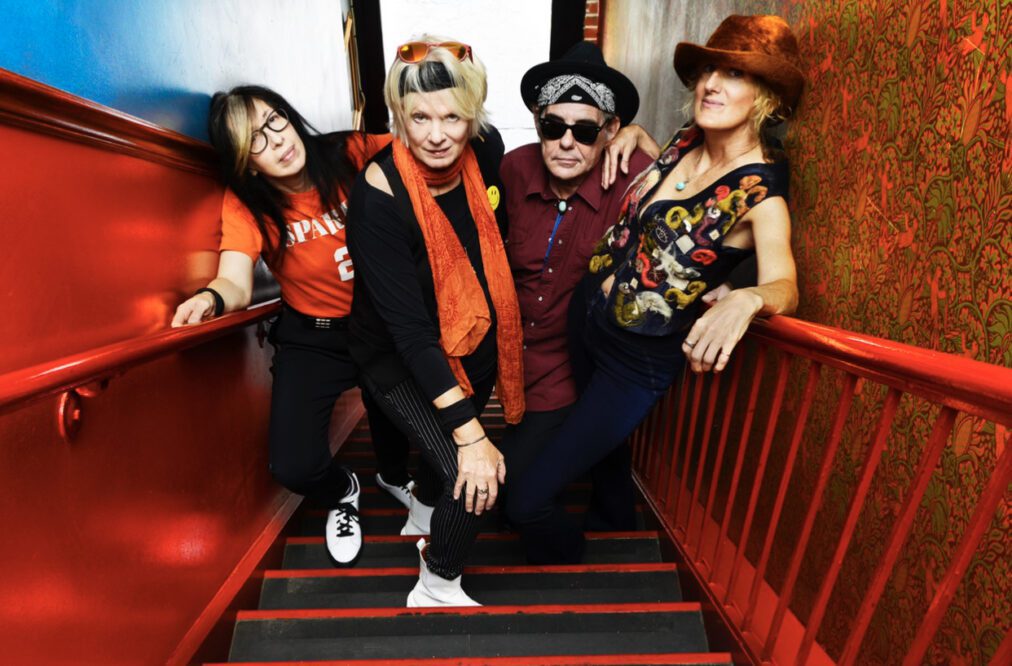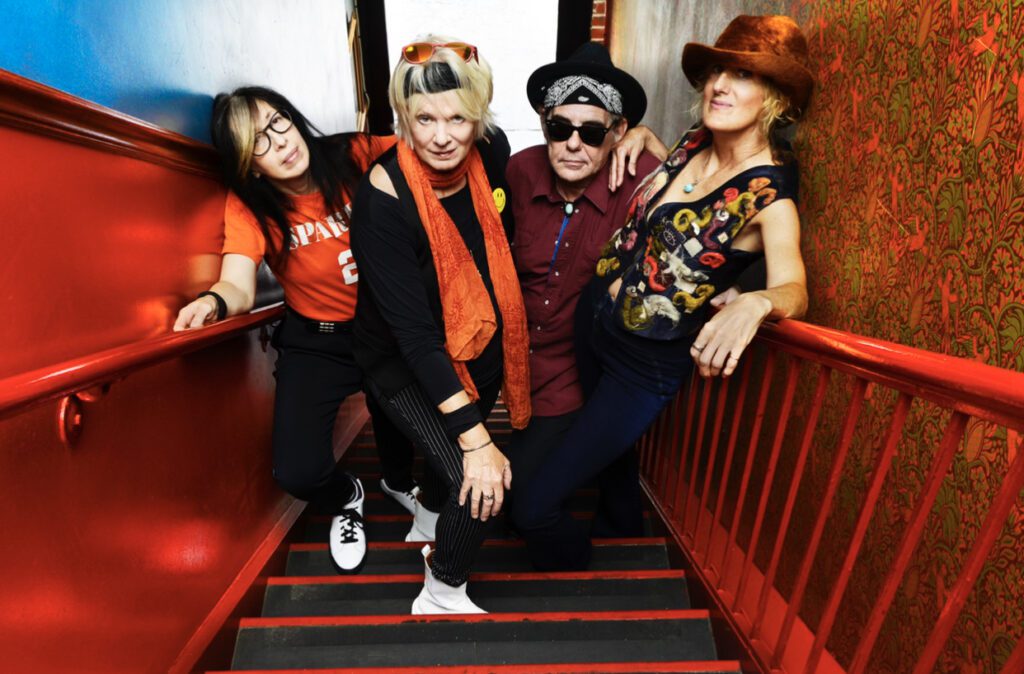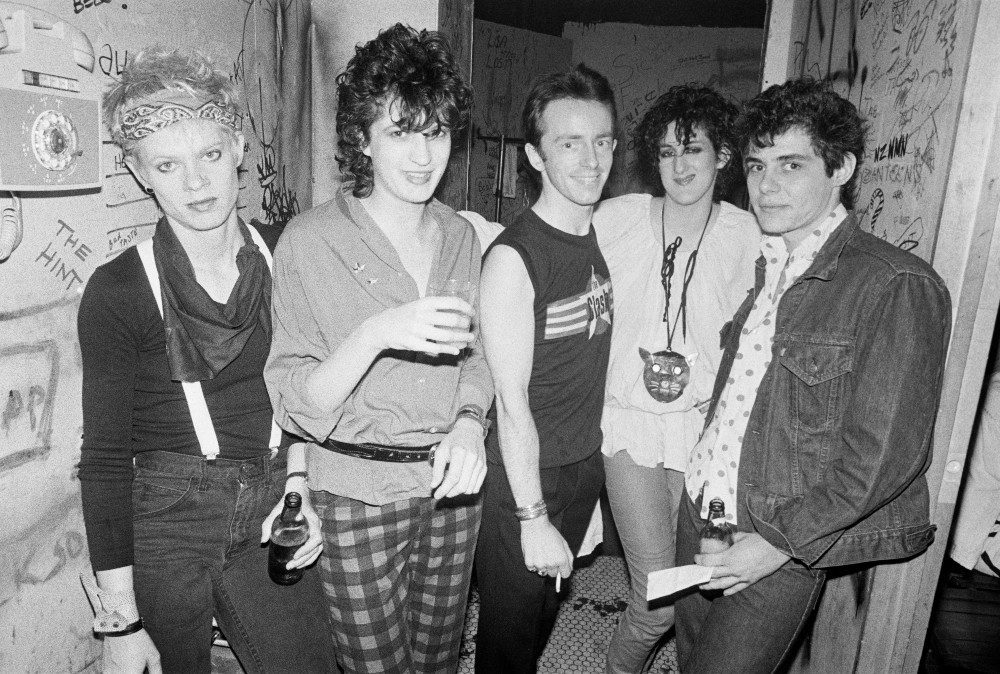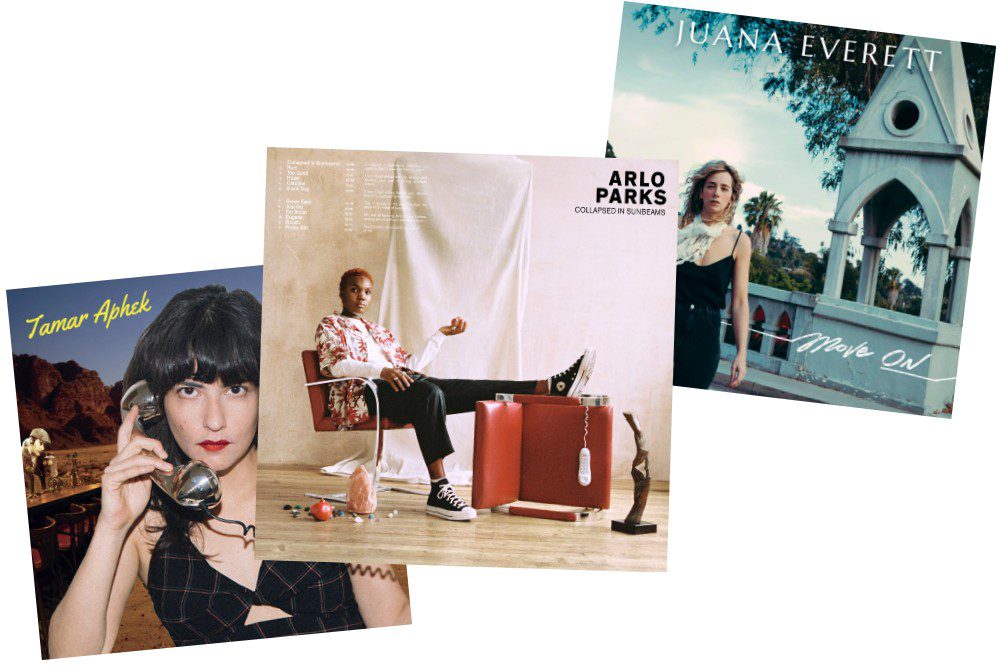

New York City in the early 1980s was a jungle of musical genres. No wave, hip hop, R&B, soul, jazz and punk informed the sound of the streets, clubs, parks and gyms, escaping from headphones and pumped from car stereos. Patti Smith had arrived a decade earlier, traipsing bookstores and vinyl shops during the day and riveting audiences at night with her unique spoken word-freewheelin’ rock, jazz performances at night. Madonna was wearing scrunchies, cropped shirts, fishnets and high tops, Debbie Harry was seducing CBGBs, and Talking Heads were pulling strange geometric shapes on stage. Afrobeat was emerging in the clubs and making its way into the percussive drive of punk and dance with street press reviewing Beastie Boys alongside Afrika Bambaataa. MTV was in its infancy, but there was no doubt the city was the place to be for music lovers, whether they wanted to thrash about wildly on dancefloors in the early hours of morning or pick up an instrument of some type and form a ramshackle band.
Out of this melting pot came post-punk progenitors Bush Tetras, who released their debut single “Too Many Creeps” in 1980. Splitting up in 1983 before their first studio LP was released, they’ve formed and reformed over the years, having evolved their sound through various iterations. Three album boxset Rhythm and Paranoia: The Best of Bush Tetras, released in early November via Wharf Cat Records, finally compiles their musical output, showcasing 29 songs (plus some live versions) from their catalogue stretching back to their formation in 1979.
Bush Tetras are practically synonymous with New York City, though Dee Pop (Dimitri Papadopolous), born in Queens, was the only New York native in the original lineup. With an intoxicating allure for outsiders, and a ‘weirder-the-better’ attitude towards its eclectic residents, the Big Apple’s siren call lured Cynthia Sley from Cleveland, Pat Place from Chicago, and their original bassist Laura Kennedy from Detroit.
“I had been designing clothes,” recalls Sley, who has lived in NYC for 42 years now. “I had just made all these stage clothes for Lydia Lunch for her tour on ZE Records. I was a visual artist, but I was really into fashion and film, and New York was like a Mecca. I just wanted to do something creative and I felt like Cleveland was limited… I felt like it was really happening in New York, everybody knew it was the hub.”
Originally an aspiring visual artist, Place had dance-punk cred already as a founding member of no-wave act Contortions, which was memorably featured on Brian Eno’s 1978 compilation No New York. She had also starred in feminist Vivienne Dick’s experimental films. Kennedy and Place were lovers who’d been living together for a year before Sley made the move. Sley recalls being cajoled into joining Bush Tetras, since she’d known Kennedy at art school in Cleveland.
“I met Pat through Laura… Pat had quit the Contortions and started up a band with Laura and Dee Pop. They started playing with Adele Bertei as a singer, but it didn’t quite work out. So then they strong handed me into doing that,” Sley says. “I was, believe it or not, a bit shy, so I had to be talked into it.”
The sense of community offered by music and art that rebelliously avoided pigeon-holing, gentrification and commercial motives was born of the scrappy, DIY attitude of young New Yorkers living downtown at a time when it was cheap, but dingy and dangerous. Still, women making music outside of the safe confines of folk, pop ballads or R&B was a novelty, and women wielding guitars they’d taught themselves how to play sent ripples of fear and excitement through the live music scene at the time.
“There was definitely a lack of women in music, absolutely, but I think because of no wave and Tina Weymouth on bass and Patti Smith, there were some new women coming on the scene that were really standing out and it made it a possibility for little punk girls like us to get involved in music,” Sley says. “We just thought, why not? You didn’t really need to be proficient at your instrument. I didn’t have to take vocal lessons. You just had to have the right chemistry.”

There’s a lean, rangy swagger to Bush Tetras’ guitar riffs, a menacing rumble of fuzz escaping into distortion every so often. Sley elegantly enunciates every loving, brutal word in her sing-song/spoken word signature style, daring you to piss her off.
On “Sucker Is Born,” the somnific, languid strum of Place’s spangly guitar oozes with cosmically-charged atmosphere. Sley’s sultry croon emerges organically, an additional instrument: “Did you care at all when they found you out, or did you make it out…?” she asks. Minutes later, the drums wake up as if shaken wildly, the guitar emits furied distortion, and Sley wails, “A sucker is born!”
The pace is all go on the determined gallop of drums and sprawling guitar on the live version of “Run Run Run.” It’s a far cry from the Talking Heads-style smudged bass lines, high-pitched guitar tuning, synthesizer claps, deeply funky dance-punk of ironically titled “You Can’t Be Funky.” The clatter of odd percussion in some alien rhythm on “Moonlite” sounds like each band member recorded their parts to their own individual timing and somehow it just manages to hold together. The early influence of Afrobeat emerges in the eclectic, celebratory drums and deep, funky bass rhythms. Guitars chug along like revving engines on “Cowboys In Africa,” a cymbal punctuating the frenzy of angular, serrated-edge guitar and a drumbeat like hot heels running down New York pavement.
The pagan magic of “Rituals” is all-consuming in its gothic, baroque oddity: Nico-style droning vocals, dissonant, creepy guitars, the shake of tambourines, and the repeated mantra “I love you, but I love you, but I love you, but I love yoooouuuuu.” I admit to Sley that it’s a favourite, but immediately apologise for picking favourites from such a rich body of work. The song was founded on lyrics and a rhythm that Dee Pop had devised, Sley explains.
“That song to me has guitar and bass weaved together to form this kind of fabric for the vocals on top of it,” she adds. “The songs were very un-self-conscious. I don’t think we were really thinking of what was it going to sound like. We just kind of did what came naturally. We wrote ‘[You Can’t Be] Funky’ and ‘Cowboys [In Africa]’ all around the same time as ‘Rituals.’ ‘Rituals’ was Dee’s idea of that vocal line almost like percussion; it was very rhythmic, and we wrote it around that. It’s one of my favourites too!”
“I like ‘Stare,’ I like ‘Nails,’ I like ‘Page 18,’ I like one that we really don’t play anymore and it’s on the original Boom In The Night [LP],” says Place. “It’s weird listening to your own stuff, and I don’t do it that often… but there’s definitely tracks I listen to and think, ‘Hey, I really like that!’”
On Rhythm and Paranoia, the previously-unreleased “Cutting Room” finally gets an outing. Dee Pop had kept an archive and until his passing in early October this year, he was heavily involved in choosing and collating the boxset collection.
“Dee kept everything, so he found ‘Cutting Floor’ and that was a song we recorded with Henry Rollins,” recalls Sley. “Pat and I had completely forgotten about it. I don’t even remember singing that. I had no idea, so some things were really a surprise because I really did not remember that song.”
Really? She forgot working with the heavyweight Black Flag front man, Henry Rollins?
“Oh no! There’s not enough drugs in the world for that,” laughs Sley. “I definitely remember recording with him, but that song, ironically, ended up on the cutting floor. We recorded it but never released that song, and we’d do that. We’d have songs that we would play for a while and then we would discard them.”
As far as recording, Place and Sley have been prolific during the last two years. While they typically write in the same room, jamming and trading lyrics and riffs, their chemistry has remained potent even while co-creating via email along with new bassist R.B. Korbet (Pussy Galore, Missing Foundation). To date, they have ten songs as yet unrecorded, with a planned release in 2022.
“We were able to keep writing,” concludes Sley. “It’s a joyful thing to write in a very dark time.”
Follow Bush Tetras on Facebook, Instagram, and Twitter for ongoing updates.




